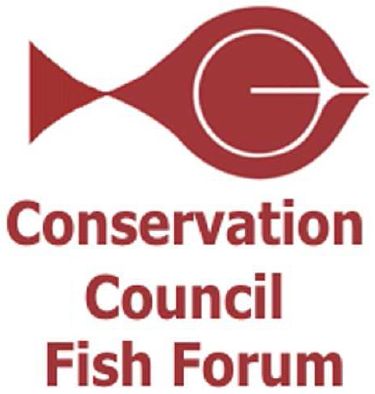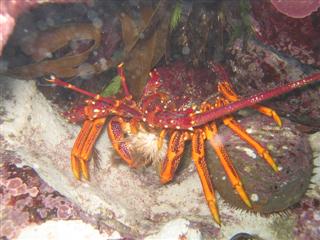| Fish Forum |
| Home |
 |
Interactions between Marine Parks and fisheries management
The fifth CCSA Fish Forum, held on Wednesday, 2nd December 2009, discussed the Interactions between Marine Parks and fisheries management (see flyer). As with previous Fish Forums, the event was attended by a variety of stakeholders, including commercial and recreational fishers, conservation NGO members, scientists and natural resource managers.
There were short presentations from Kelly Crosthwaite, General Manager, PIRSA Fisheries, Jon Emmett, Senior Project Officer, DEH Coast and Marine Conservation Branch, and Professor Robert Kearney, PhD, DSc, AM, Emeritus Professor of Fisheries, Institute of Applied Ecology, University of Canberra, followed by an hour of discussion on a variety of related issues.
Analysis of PISCO dataset (filtering for well managed fisheries in temperate waters) - to be posted
The discussion below was provided prior to the event.
Professor Kearney has been a vocal critic of the South Australian Marine Park approach, but comes to this event seeking constructive debate on the issues. His views have been expressed mainly through a consultancy report prepared for the fishing industry in South Australia. As such, the views expressed are primarily from the perspective of advice to the fishing industry on the problems (as he sees them) with the proposed marine parks. The report has since been appended to the fishing industry submission on the draft Marine Park boundaries.
 Conservation
sector experience with Marine Park zoning negotiations is that fundamental
conceptual differences have limited the potential for consensus on boundaries.
One important such difference related to the role of the South Australian
Representative System of Marine Protected Areas (SARSMPA) in addressing
threats to marine biodiversity, particularly those arising from fishing.
These divisions were exacerbated by the report and/or its interpretation
by the commercial fishing sector.
Conservation
sector experience with Marine Park zoning negotiations is that fundamental
conceptual differences have limited the potential for consensus on boundaries.
One important such difference related to the role of the South Australian
Representative System of Marine Protected Areas (SARSMPA) in addressing
threats to marine biodiversity, particularly those arising from fishing.
These divisions were exacerbated by the report and/or its interpretation
by the commercial fishing sector.
The conservation sector has the view that threats to marine biodiversity and ecological processes have already been clearly identifed (see selected references). It is acknowledged that Marine Parks, although being a vital tool for conserving biodiversity and ecological processes, can not fully address all of these threats. Marine Parks can, however, provide a focus for the application of these other tools, and the Marine Parks Act 2007 facilitates this through its links to a dozen other acts.
With regard to threats from fishing, there is a considerable body of literature about the failure of traditional fisheries management approaches, and the benefits of closed areas (fishery reserves) for managing fish stocks or other single issues (e.g. bycatch or threatened species interactions). However, some uncertainty remains about the specific benefits (Ward et al. 2001), and their local relevance has also been questioned, given that existing fisheries management practices in South Australia do address many of the globally documented threats to marine biodiversity (noting that some spatial management has nevertheless been adopted to good effect). Importantly, the objectives of fisheries reserves have some fundamental differences to those aimed at protecting biodiversity. Although the conservation sector does have concern about the status of some South Australian stocks, their focus for the SARSMPA is the conservation of biodiversity and ecological processes - the many thousands of species and the interactions between them and their physical environment. Fisheries management has traditionally been focused on management of single stocks or issues, and the indirect impacts of fishing on biodiversity, ecological processes and trophic structure (food chains) are not well understood, and must therefore be considered as threats.
The conservation sector considers that the objectives of the SARSMPA - and the long term preservation of biodiversity and ecological processes - can not be achieved without adequately sized areas that are allowed to return to the most natural state possible, i.e. Sanctuary Zones. This view is supported by ecological assessments under the EPBC Act, some of which draw clear links to the SARSMPA and discuss comparison of fished and unfished areas as a way to understand and/or manage the ecological impacts of fishing. Sanctuary Zones also provide vital reference areas that can be used to distinguish the relative impacts of climate change and fishing on marine stocks and ecosystems. Any form of extraction will undermine such an approach.
Professor Kearney's report appears to have overlooked the fundamental differences beween the outer boundary proclamation process and forthcomign management planning process. The former has ensured that the full range of South Australia's biological diversity will fall within a conservation management framework, while the latter should provide the detail which he claims have been lacking so far. Nevertheless, the conservation sector share his concern that there be adequate monitoring and performance assessment of the Marine Parks.
The following references document international, national and local threats
to marine biodiversity, but are just a sample
of the most relevant high-level documents. There is also a vast body of
scientific literature documenting the many and varied threats to the marine
environment.
IUCN World Commission on Protected Areas (IUCN-WPCA) (2008). Establishing
Resilient Marine
Protected Area Networks – Making it happen: IUCN-WCPA, National
Oceanic and Atmospheric
Administration and The Nature Conservancy, 118p. Washington, D.C.
Brierley, Andrew S., and Kingsford, Michael J. (2009) Impacts of climate change on marine organisms and ecosystems. Current Biology, 19 (14). R602-R614
Worm B and others (2006). Impacts of Biodiversity Loss on Ocean Ecosystem Services Science 314 pp. 787-790
Marine Biodiversity Decline Working Group (2008). A
National Approach to Addressing Marine Biodiversity Decline –
Report to the Natural Resource Management Ministerial Council
Baker (2000). A Guide to Marine Protected Areas
Baker (2004). An Ecologically Representative System of Marine Protected Areas in S.A.
South Australian 2003 State of the environment report
South Australian 2008 State of the environment report
Other references
Guidelines for the establishment of the NRSMPA
The Ecology Centre, The University of Queensland (2009). Scientific
Principles for Design of
Marine Protected Areas in Australia: A Guidance Statement.
Ward TJ, Heinemann D, Evans N (2001). The Role of Marine Reserves as Fisheries Management. Tools: A Review of Concepts, Evidence and International Experience
Partnership for Interdisciplinary Studies of Coastal Oceans (PISCO) (2007).
The
Science of Marine Reserves (2nd Edition, International Version)
www.piscoweb.org. 22 pages.PISCO
Dudley, N., S. Stolton, A. Belokurov, L. Krueger, N. Lopoukhine, K. MacKinnon, T. Sandwith and N. Sekhran [editors] (2010); Natural Solutions: Protected areas helping people cope with climate change, IUCNWCPA, TNC, UNDP, WCS, The World Bank and WWF, Gland, Switzerland, Washington DC and New York, USA
Ling SD, Johnson CR, Frusher SD, Ridgway KR (2009). Overfishing reduces
resilience of kelp beds to climate-driven catastrophic phase shift. Proc
Natl Acad Sci 106 pp. 22341-5
Worm, B., R. Hilborn, J. Baum, T. Branch, J. Collie, C. Costello, M. Fogarty,
E. Fulton, J.
Hutchings, S. Jennings, O. Jensen, H. Lotze, P. Mace, T. McClanahan, C.
Minto, S.
Palumbi, A. Parma, D. Ricard, A. Rosenberg, R. Watson, D. Zeller (2009).
Rebuilding Global Fisheries, Science 325, pp. 578-585
R. C. Babcock, N. T. Shears, A. C. Alcala, N. S. Barrett, G. J. Edgar, K. D. Lafferty, T. R. McClanahan, and G. R. Russ (2010). Decadal trends in marine reserves reveal differential rates of change in direct and indirect effects. Proc Natl Acad Sci 107
Page updated 25/02/2010